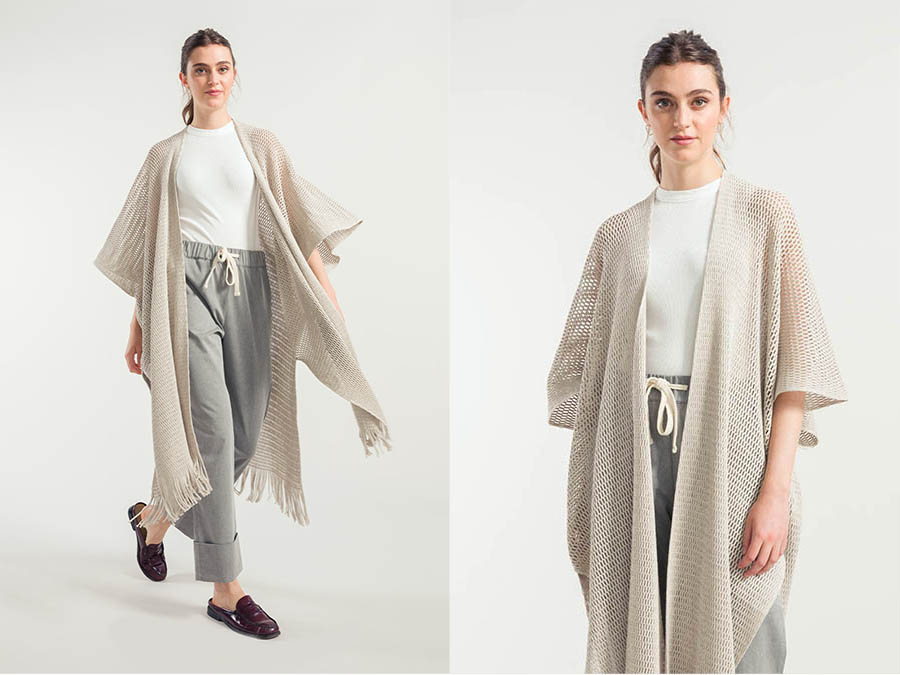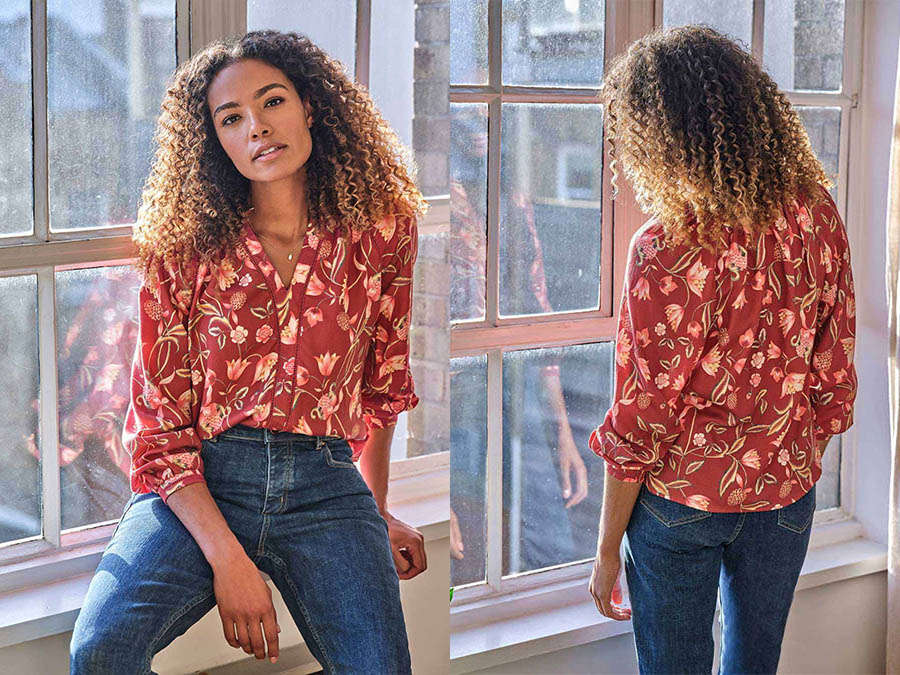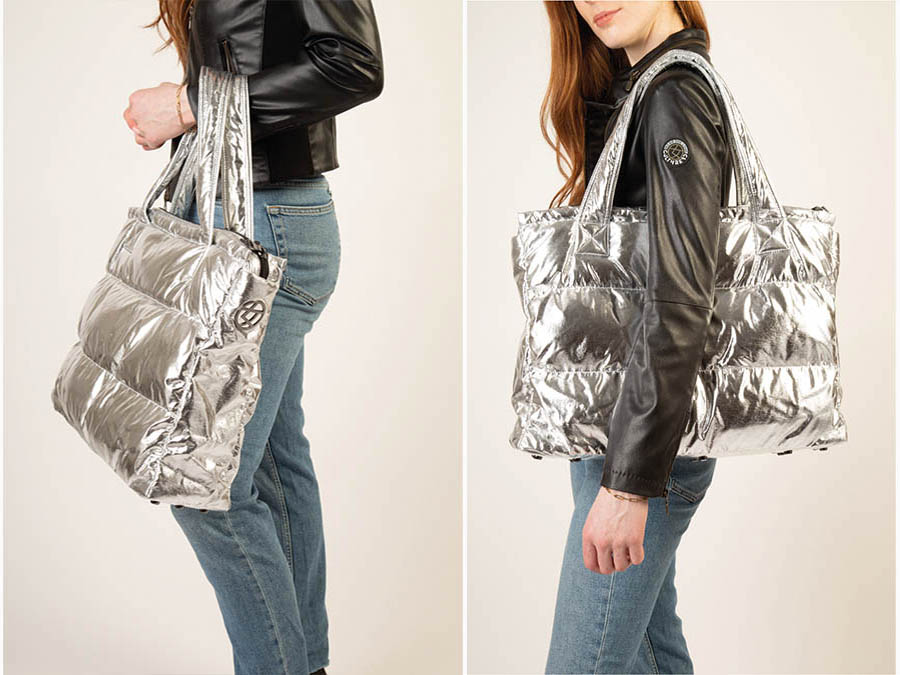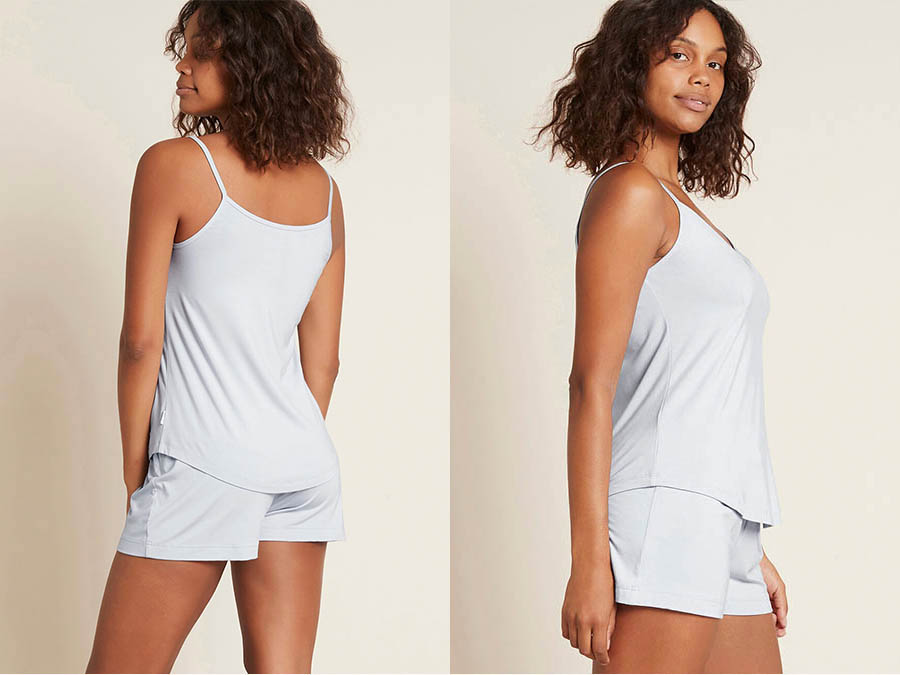What is Recycled Cotton?
Recycled cotton is a sustainable textile material made from post-industrial and post-consumer cotton waste.
It’s created by gathering scraps of cotton fabric, old garments, or textile leftovers, then breaking them down into fibers and spinning them into new yarns.
This process reduces the need for virgin cotton, conserves resources, and minimizes waste in landfills.
Recycled cotton can be used to produce various products like clothing, household textiles, and industrial materials, offering a more eco-friendly alternative to conventional cotton production.
See our featured recycled cotton fishnet kimono brisa from Rifo Labs.
How Do They Make Recycled Cotton?
Recycled cotton is typically made through a process that involves breaking down old or unused cotton textiles into their raw fibre form, then spinning those fibers into new yarns or fabrics. Here at sustainablefashion.ie we simplified overview of the process.
1. Collection
Old textiles, such as clothing or fabric scraps, are collected from various sources, including post-consumer waste (like donated clothing) and pre-consumer waste (like scraps from textile manufacturing).
2. Sorting
The collected textiles are sorted based on factors like colour, fibre content, and quality. This step helps ensure that the cotton produced will meet certain standards and specifications.
3. Shredding
The sorted textiles are then shredded or cut into smaller pieces. This can be done mechanically or chemically, depending on the desired end product and the composition of the textiles.
4. Cleaning
The shredded cotton pieces undergo a cleaning process to remove impurities such as dirt, dyes, and other contaminants. This step is crucial for ensuring the quality and purity of the cotton.
5. Carding
The cleaned cotton fibers are carded, which involves aligning the fibers to create a uniform and consistent texture. Carding helps improve the strength and appearance of the cotton.
6. Spinning
The carded cotton fibers are spun into yarns using spinning machines. This step involves twisting the fibers together to create strong and durable yarns that can be used for various applications.
7. Weaving or knitting
The cotton yarns can then be woven or knitted into fabrics, which can be used to make new clothing, home textiles, and other products.
And Remember
Throughout this process, efforts are made to minimise waste and energy consumption, making recycled cotton a more sustainable alternative to conventional cotton production.
Additionally, advancements in technology and techniques continue to improve the efficiency and environmental impact of recycled cotton manufacturing.






